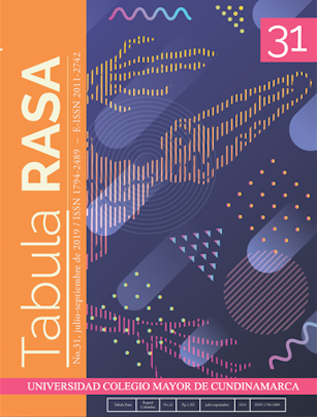“Criaturas do espelho”: política anti-humana em Alice, de Tenniel
Mostrar biografia dos autores
Este artigo propõe o realismo indexical de Tenniel –a fidelidade biológica na apresentação gráfica do não-humano- como uma revisão crítica do antropocentrismo operativo das histórias de Alice de Carroll. Tanto Alice no País das Maravilhas quanto Através do Espelho são consideradas aqui, e a reputação geral de Carroll como um precursor da anti-vivissecção e defensor dos direitos dos animais é desafiada com base em sua posição carnívora de bem-estar. As imagens de Tenniel estão de acordo com o texto de Carroll em vários pontos-chave da ética, mas também articulam um pensamento adicional sobre o não-humano e o potencial particularmente limitado de qualquer criatura ou política
«imaginada» pelo humano. Outro trabalho de Tenniel do mesmo período também é avaliado, tendo em vista que demonstra a aplicação racista de traços animalescos em seu trabalho político de desenho para o Punch Magazine no século XIX e outras divergências frenteàs técnicas gráficas históricas naturais nas principais imagens de Alice. O trabalho de Tenniel é comparado aos estilos visuais de outros caricaturistas e taxidermistas nas vibrantes tradições de coleta e exibição de animais. Por fim, o artigo faz um esclarecimento sobre a expressão humana versus a fidelidade biológica na intersecção de imagem e texto que também se reflete nas teorias da animalidade e do antropocentrismo. A política anti-humana de Tenniel emerge no contexto de suas técnicas realistas de história natural dentro do texto em um comentário reflexivo desafiador. Esse estranho biologismo resulta na assombrosa fantasia do real, em tais exemplos, pois perturba tanto a presunção de classificação racional quanto a propriedade ética, bem como a naturalidade acrítica de um protagonista infantil. Alice é o “cara mau”.
Visualizações de artigos 156 | Visitas em PDF 83
Downloads
- Abeles, F.F. (Ed.). (2001). The Political Pamphlets and Letters of Charles Lutwidge Dodgson and Related Pieces: A Mathematical Approach. Charlottesville, VA: University of Virginia Press.
- Bewell, A. (2004). Romanticism and colonial natural history, Studies in Romanticism, 43(1), 5-34.
- British Library (2019). Lewis Carroll’s Alice’s Adventures Under Ground – Introduction. Online Gallery. Virtual Books: Images Only. Recuperado de: http://www.bl.uk/onlinegallery/ttp/alice/accessible/introduction.html
- British Library (2019a). Aesop’s Fables illustrated by John Tenniel, 1848. Collection items. Recuperado de: https://www.bl.uk/collection-items/1848-edition-of-aesops-fables-illustrated-by-john-tenniel
- Burgan, R. (2014). Anthropomorphic taxidermy: How dead rodents became the darlings of the Victorian elite. Atlas Obscura, Recuperado de: https://www.atlasobscura.com/articles/anthropomorphic-taxidermy-how-dead-rodents-became-the-darlings-of-the-victorian-elite
- Carroll, L. (1996 [1875]). Some Popular Fallacies About Vivisection, in The Complete Illustrated Lewis Carroll. Ware, Hertfordshire: Wordsworth Editions.
- Carroll, L. (1894). Sylvie and Bruno Concluded. New York, NY: Macmillan. Recuperado de: http://www.gutenberg.org/files/48795/48795-h/48795-h.htm
- Carroll, L. (1876). The Hunting of the Snark. London: Macmillan Publishers.
- Daston, L. & Mittman, G. (Eds.). (2005). Thinking with Animals: New Perspectives in Anthropomorphism. New York, NY: Columbia University Press.
- Douglas-Fairhurst, R. (2015). The Story of Alice: Lewis Carroll and the Secret History of Wonderland. Cambridge, MA: fte Belknap Press of Harvard University Press.
- Gardner, M. (1998). The Annotated Alice: The Definitive Edition. New York, NY: Norton.
- Geier, T. (2017). Meat Markets: The Cultural History of Bloody London. Edinburgh: Edinburgh University Press.
- Grandville, J.J. (1987). Fantastic Illustrations of Grandville. S. Applebaum (Ed.). New York, NY: Dover.
- Halfmann, D. & Young, M.P. (2010). War pictures: fte grotesque as a mobilizing tactic. Mobilization: An International Quarterly, 15(1), 1-24.
- Hancher, M. (1985). The Tenniel Illustrations to the “Alice” Books. Columbus, OH: fte Ohio State University Press.
- Jeong, S. (2011). fte para-indexicality of the cinematic image, Rivista di estetica, 46, 75-101.
- Kafka, F. (1995). A Crossbreed. In N. Glatzer (Ed.) & Muir (Trans.). The Complete Stories. New York, NY: Schocken.
- Kenyon-Jones, C. (2001) Kindred Brutes: Animals in Romantic Period Writing. London: Ashgate/Routledge.
- Kérchy, A. (2018). Alice’s non-anthropocentric ethics: Lewis Carroll as a defender of animal rights, Cahiers victoriens et édouardiens, 88. Recuperado de: https://journals.openedition.org/cve/3909
- Kim, C.J. (2015). Dangerous Crossings: Race, Species, and Nature in a Multicultural Age. New York, NY: Cambridge University Press.
- Lovell-Smith, R. (2003). fte animals of Alice in Wonderland: Tenniel as Carroll’s reader, Criticism, 45(4), 383-415.
- Lovell-Smith, R. (2007). Eggs and serpents: Natural history reference in Lewis Carroll’s scene of Alice and the pigeon, Children’s Literature, 35, 27-53.
- Mayer, J. (2009). fte vivisection of the snark, Victorian Poetry, 47(2), 429-448.
- Morris, F. (2005). Artist of Wonderland: The Life, Political Cartoons, and Illustrations of Tenniel. Charlottesville, VA: University of Virginia Press.
- Morris, P. & Ebenstein, J. (2014). Walter Potter’s Curious World of Taxidermy. New York, NY: Penguin.
- Morse, D. & Danahay, M. (Eds.). (2007). Victorian Animal Dreams: Representations of Animals in Victorian Literature and Culture. London: Ashgate/Routledge.
- Museum of Natural History (2019). fte Oxford Dodo. Recuperado de: https://oumnh.ox.ac.uk/the-oxford-dodo
- Paolozzi, A.E. (2015). Alice’s menagerie in Wonderland: Text and image as collaborative critique of animal display in Victorian London, Sloth, 1(1). Recuperado de: https://www.animalsandsociety.org/human-animal-studies/sloth/sloth-volume-i-no-1-march-2015/text-and-image-as-a-collaborative-critique-of-animal-display-in-victorian-london/
- Ritvo, H. (1998). The Platypus and the Mermaid: And Other Figments of the Classifying Imagination. Cambridge, MA: Harvard University Press.
- Simkin, J. (2014). John Tenniel. Spartacus Educational. Recuperado de: https://spartacus-educational.com/Jtenniel.htm
- Ftomson, P. (2019 [1972]). The Grotesque. New York, NY: Routledge.
- Wells, P. (2009). The Animated Bestiary: Animals, Cartoons, and Culture. New Brunswick, NJ: Rutgers University Press.
- Wikimedia Commons (2019). File: Dodo Natural History Museum London England. jpg Recuperado de: https://commons.wikimedia.org/wiki/File:Dodo_Natural_History_Museum_London_England.jpg
- Wikipedia (2019). File:Tenniel Knight.jpg Recuperado de: https://en.m.wikipedia.org/wiki/File:Tenniel_Knight.jpg
- Zipes, J. (1987). fte enchanted forest of the Brothers Grimm: New modes of approaching the Grimms’ fairy tales, The Germanic Review: Literature, Culture, Theory, 62(2), 66-74.
- Ziser, M. & Sze, J. Climate change, environmental aesthetics, and global environmental justice cultural studies, Discourse: Journal for Theoretical Studies in Media and Culture, 29(2), 384-410.








